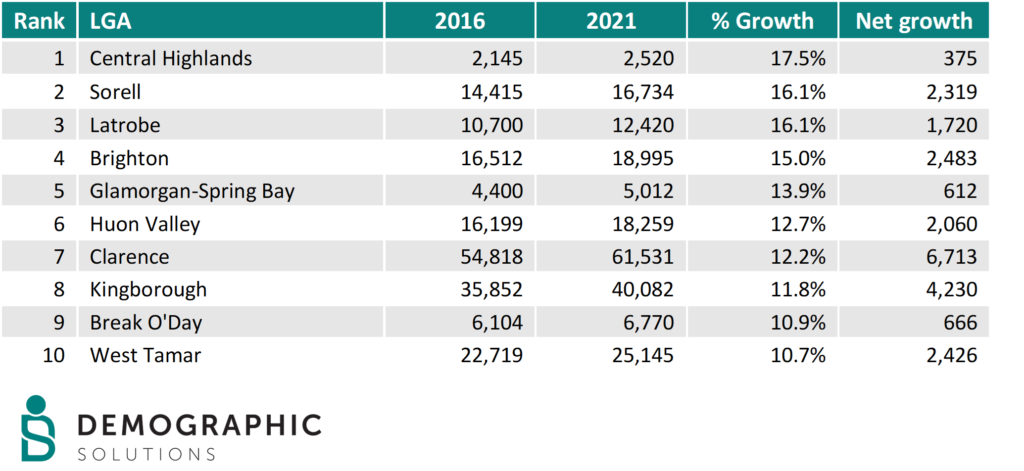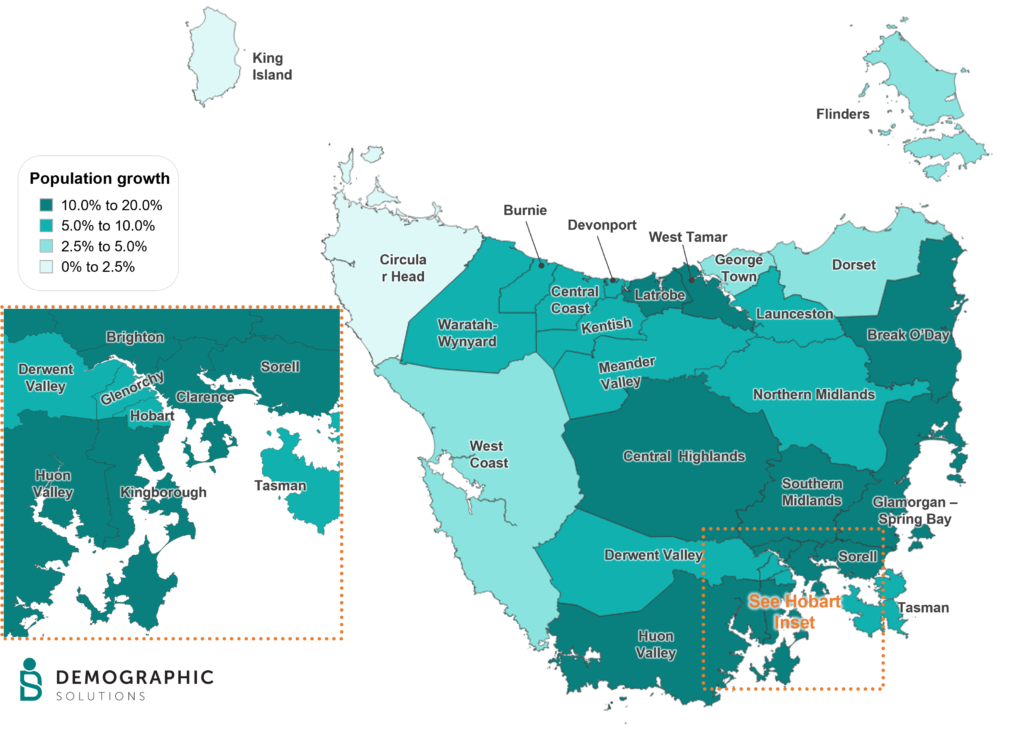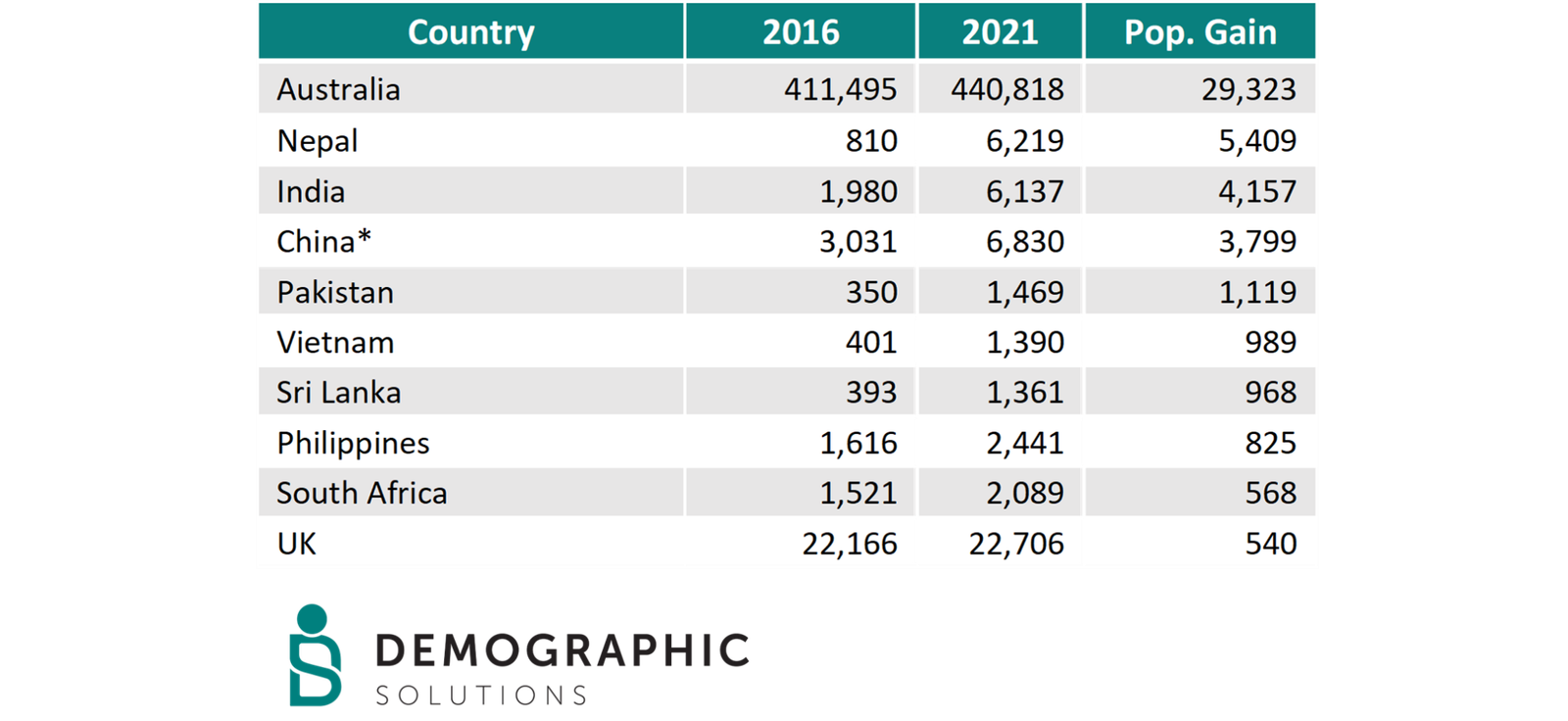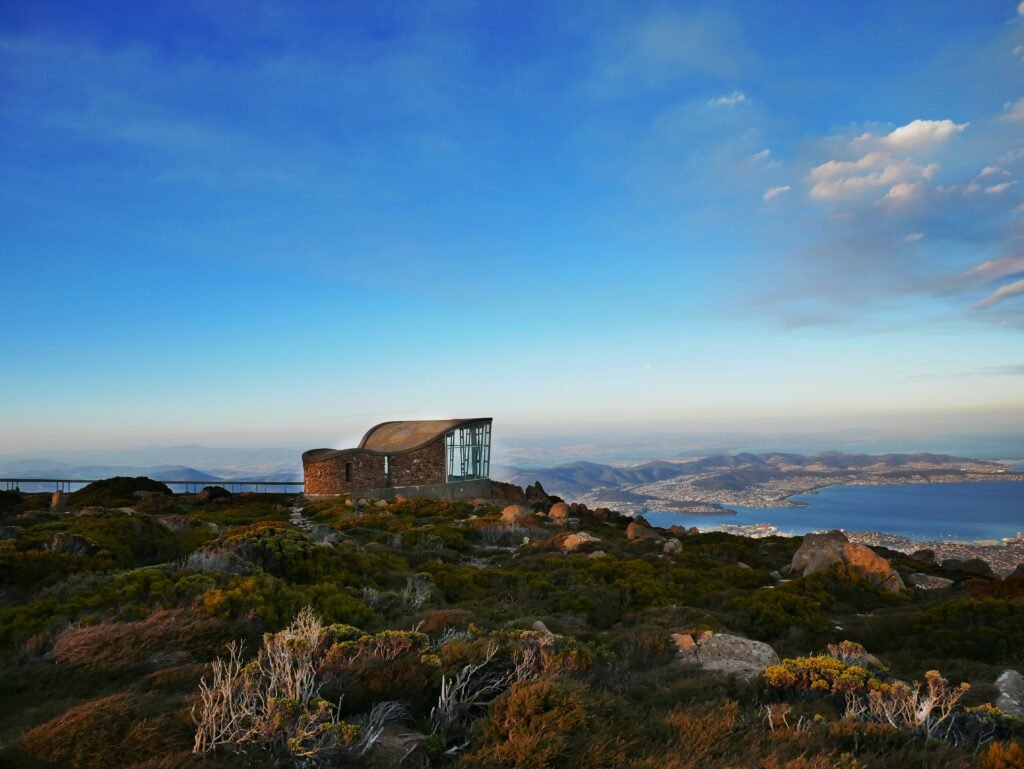The rate of population growth in Tasmania accelerated rapidly during the 2016-2021 period. The growth rate of 9.3% or 47,610 persons was remarkable after a relatively sluggish previous decade where the State’s population grew by only 33,480. The fastest growing Local Government Areas (LGAs) in Tasmania were a combination of smaller rural LGAs and areas on the edge of Hobart and Launceston.
However, the fastest growing LGA in Tasmania between 2016 and 2021 was Central Highlands (17.5%). Almost all LGAs in Tasmania benefited from the large overseas and interstate migration gains to the State that preceded the COVID-19 pandemic. The greatest gains in net terms were in the LGAs of Clarence, Hobart, Glenorchy, Launceston and Kingborough. See table below.
Top 10 Growth LGAs by rate, Tasmania, 2016-2021

Source: ABS Census of Population and Housing, 2016 and 2021
As the map below indicates, all LGAS in Tasmania increased in population between 2016 and 2021. While no LGA grew by more than 20%, the growth was relatively consistent in and around Hobart. All fringe and outer LGAs grew strongly, with new greenfield and low-density growth common in most areas.
While there were increasing housing densities in Hobart, most of the growth was driven by new greenfield estates on the edge of the city in places such as Kingston, Glebe Hill, Brighton, Gagebrook and Risdon Vale. The impact of Hobart’s economic strength is also likely to be boosting housing demand and therefore population growth in places further afield such as Southern Midlands and Huon Valley.
Population Growth, Tasmania LGAs, 2016-2021

Source: ABS Census of Population and Housing, 2016 and 2021
Similarly, the large population growth in West Tamar and Latrobe is likely a reflection of a strong economy in Launceston and to a lesser degree Devonport. These areas offer more rural lifestyles, but they are still within relatively easy reach of employment in the larger centres. The other areas that had significant population growth to 2021 tend to be areas that are associated with ‘lifestylers’ and retirees, notably areas to the south of Hobart, the East Coast and the Central Highlands. By comparison, the more remote parts of Tasmania had less growth, with King Island and Circular Head only increasing by small numbers.
So, what has turned things around? The economy has been very buoyant and the State has attracted a large number of migrants from within Australia and also from overseas. The most significant gains have been in persons born in Nepal, India and China. The rise of the Nepalese-Australian community has been the subject of great interest for us and fellow demographic researchers alike, as the population has grown rapidly from a very low base in 2016. The Nepalese-born population in the three large Hobart LGAs (Hobart, Glenorchy and Clarence) has grown from 495 persons in 2016 to 3,784 and represents more than 60% of the Tasmanian growth. See Table below.
Also read:
Census 2021 “Australia’s Emerging Communities
Simone Alexander: The Nepalese population has doubled since 2016
Largest Gains in Tasmania by Country of Birth, 2016-2021

* Not including Hong Kong, Macao or Taiwan
Source: ABS Census of Population and Housing, 2016 and 2021
Stay tuned for more stories from the 2021 Census and our quick-fire series on LinkedIn.

